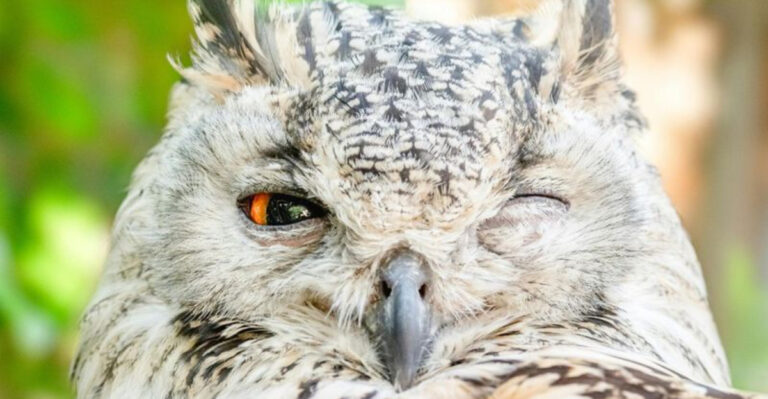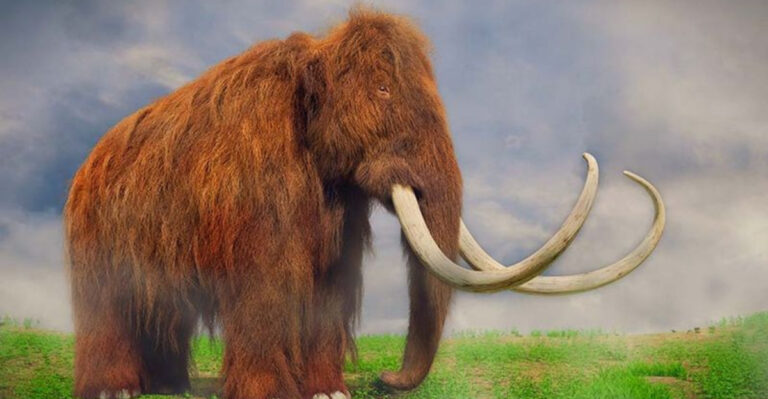Meet Elasmotherium, The Prehistoric Giant That Inspired The Mudhorn
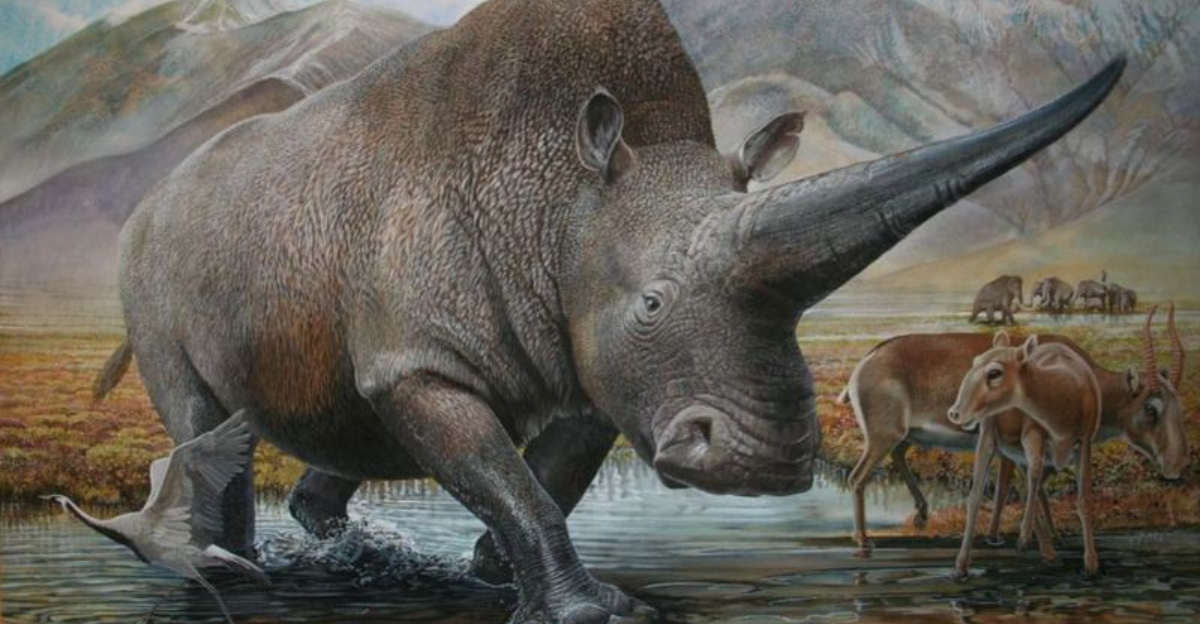
Ever wonder what inspired the fearsome Mudhorn creature from The Mandalorian? Look no further than Elasmotherium, a massive prehistoric relative of today’s rhinos that once thundered across ancient Eurasia.
With its single massive horn and tank-like body, this Ice Age giant left a mark on both the physical landscape and human imagination. Let’s explore this fascinating beast that bridges the gap between scientific discovery and pop culture inspiration.
What Was Elasmotherium And When Did It Live
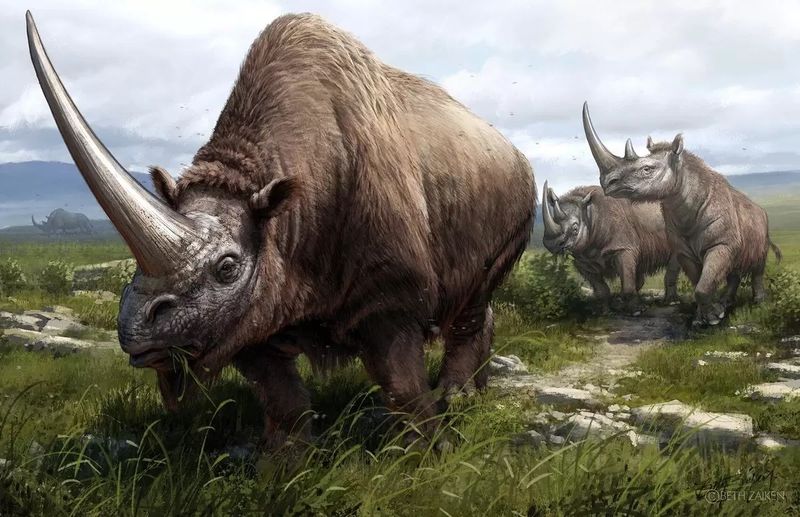
Elasmotherium was a genus of massive rhinoceros that roamed Eurasia during the Late Pliocene through the Pleistocene epochs. These behemoths walked the Earth between 2.6 million and roughly 29,000 years ago, making them contemporaries of early humans.
Nicknamed the ‘Giant Rhinoceros’ or ‘Thin Plate Beast’ (referring to the unusual plates in its teeth), Elasmotherium survived multiple ice ages. The most famous species, Elasmotherium sibiricum, was among the last to disappear.
Scientists have found fossils primarily across Russia, Ukraine, and Kazakhstan, suggesting these creatures preferred the vast open grasslands that once covered much of northern Eurasia.
A One Horned Giant That Roamed The Steppes
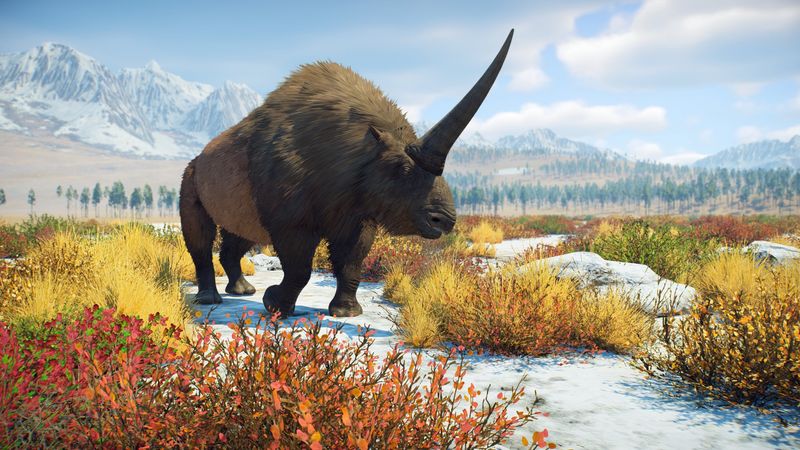
Standing nearly 7 feet tall at the shoulder and stretching up to 15 feet long, Elasmotherium dominated the ancient Eurasian steppes. Unlike modern rhinos with their relatively modest horns, this prehistoric giant sported a single massive horn that could reach an astonishing 6 feet in length!
The beast’s enormous body likely weighed up to 4.5 tons – heavier than a modern SUV. Its powerful legs supported this tremendous weight while allowing surprising speed when necessary.
Fossil evidence shows adaptations for life in open grasslands: wide hooves for stability on soft ground and teeth specialized for grazing on tough steppe grasses that other animals couldn’t digest.
The Real Life Unicorn Of Prehistoric Eurasia
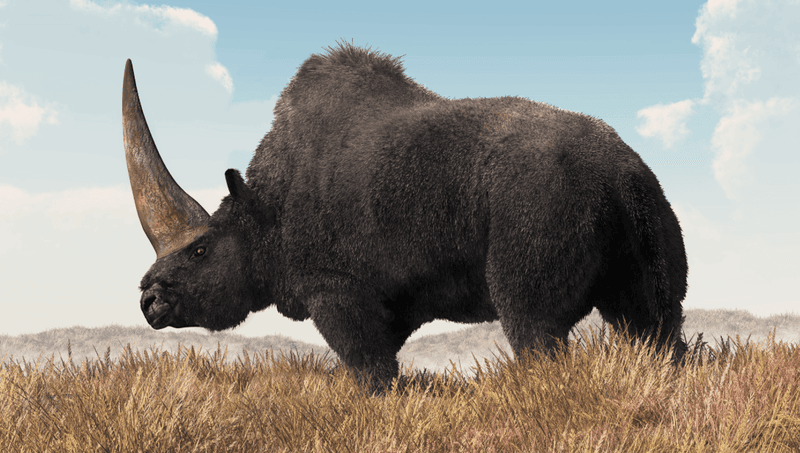
That single massive horn jutting from its forehead earned Elasmotherium an unexpected nickname: the Siberian Unicorn. Though far from the dainty horse-like creature of fairy tales, this beast may have inspired early unicorn myths that spread across cultures.
Ancient human cave paintings across Europe sometimes depict single-horned beasts that match Elasmotherium’s profile rather than horses. Some paleontologists believe encounters with these creatures – or stories passed down about them – influenced early unicorn legends.
Chinese mythology includes references to zhi, a single-horned beast of judgment that shares striking similarities with Elasmotherium. These connections show how prehistoric animals shaped human imagination long before science understood them.
How Elasmotherium Compares To Modern Rhinos
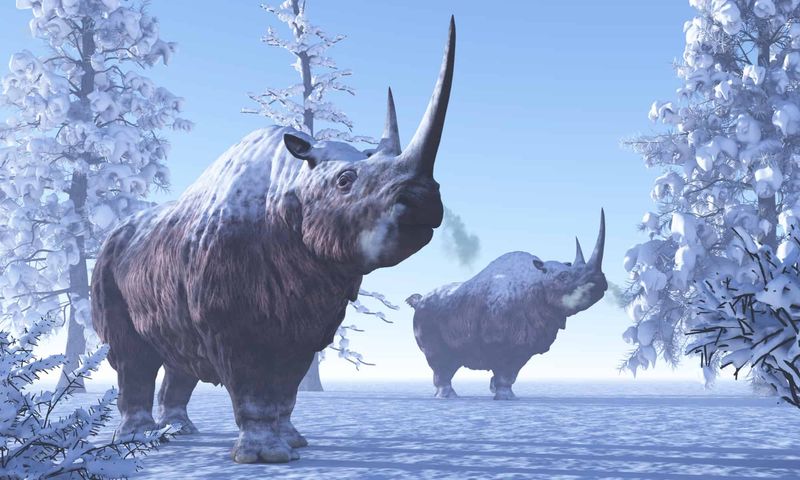
While clearly related to today’s rhinos, Elasmotherium was a true super-sized cousin. Modern white rhinos – the largest living species – reach about 6 feet tall and 13 feet long, still smaller than their prehistoric relative.
The most striking difference was that enormous horn. Modern rhino horns are made of keratin (like your fingernails), but Elasmotherium’s horn had a bony core covered with keratin, creating a weapon of tremendous size and strength.
Their teeth tell another story. Modern rhinos have simple grazing teeth, but Elasmotherium had high-crowned teeth with complex ridges – perfect for processing tough, gritty steppe grasses. This adaptation helped them thrive in harsh environments where other giants couldn’t survive.
Could This Be The Inspiration Behind The Mudhorn
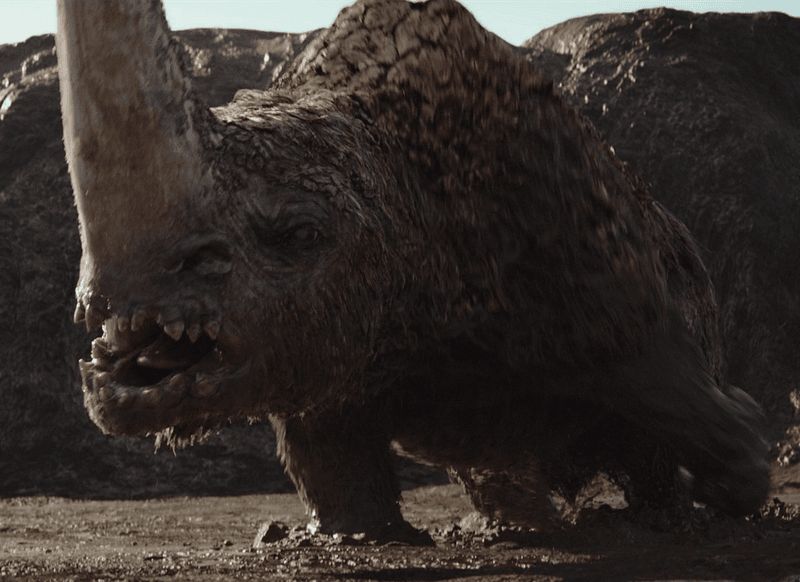
The Mandalorian’s fearsome Mudhorn – a massive, single-horned beast that nearly defeated our beskar-clad hero – bears uncanny similarities to Elasmotherium. Both creatures feature a tank-like body, powerful legs, and that signature massive horn projecting from the forehead.
Star Wars creature designers often draw inspiration from prehistoric Earth animals. The Mudhorn’s aggressive territorial behavior matches what paleontologists believe about Elasmotherium’s temperament and defensive instincts.
Even the muddy, open-plain habitat of the Mudhorn parallels the environments where Elasmotherium fossils are typically discovered. This connection between prehistoric reality and science fiction shows how ancient beasts continue to capture our imagination across media.
The Role Of The Horn And What It Might Have Been Used For
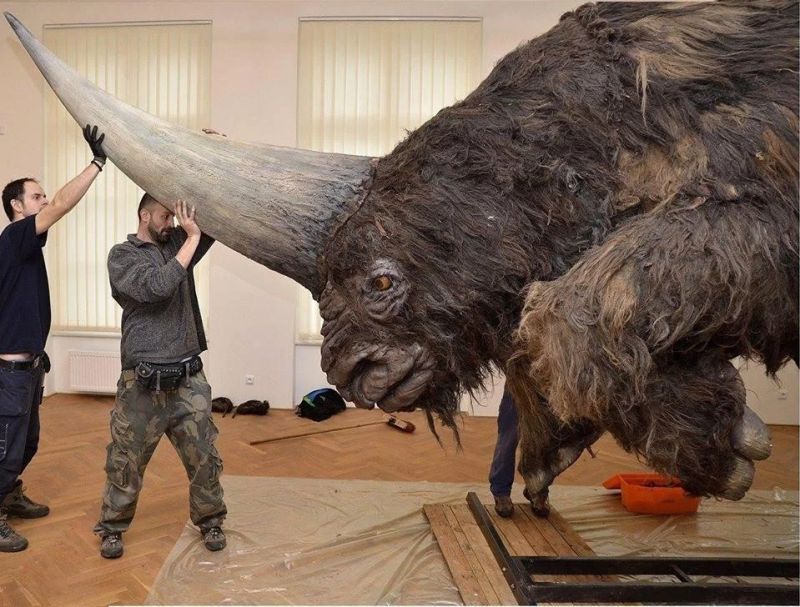
That spectacular horn wasn’t just for show. Based on muscle attachments visible in fossil skulls, Elasmotherium could swing its head with tremendous force, turning the horn into a formidable weapon against predators and rivals.
Males likely used their horns during mating season, battling for dominance in spectacular contests that would make modern rhino fights look tame. The larger the horn, the more attractive the male might have appeared to potential mates.
Beyond combat, the horn may have served as a tool for clearing snow to reach winter grasses – crucial for survival during harsh Ice Age winters. Some researchers even suggest the horn might have had display features like vibrant coloration or textures to communicate status within herds.
Why Elasmotherium Went Extinct
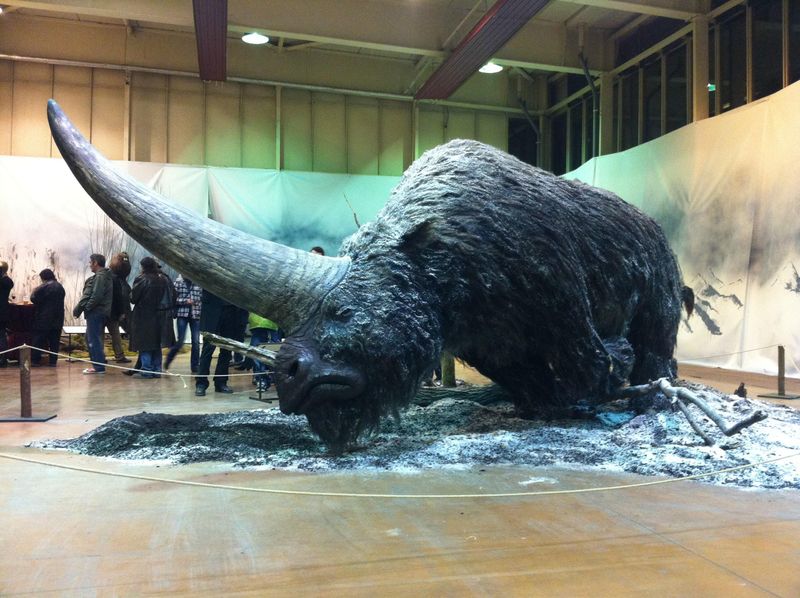
The mystery of Elasmotherium’s disappearance continues to puzzle scientists. Most evidence points to a perfect storm of challenges around 29,000 years ago – right as the last Ice Age reached its harshest point.
Climate change dramatically altered the vast grasslands these specialized grazers depended on. As temperatures plummeted, their food sources dwindled while their massive bodies required enormous daily calorie intake just to survive.
Human hunters may have delivered the final blow. Our ancestors were spreading across Eurasia at precisely this time, armed with increasingly sophisticated weapons and hunting strategies. For a slow-breeding giant that produced just one calf every few years, even limited hunting pressure could have pushed these magnificent creatures past the point of recovery.
Fossil Discoveries That Changed What We Know
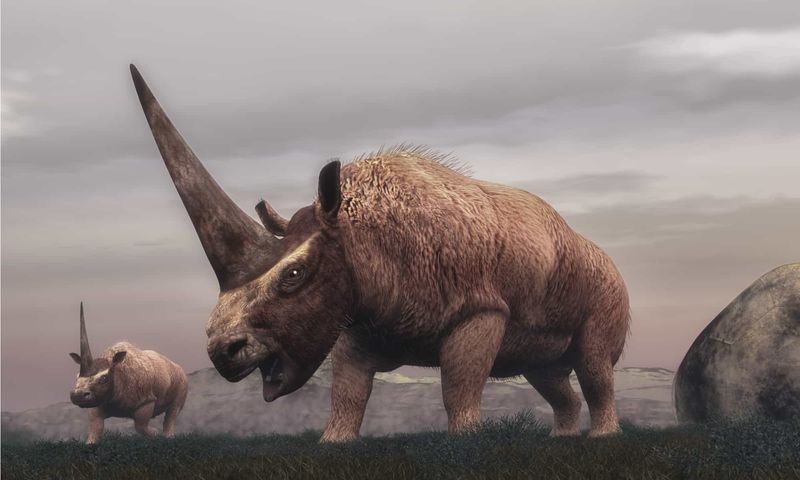
A groundbreaking 2018 discovery in Kazakhstan rocked the scientific community – DNA evidence showing Elasmotherium survived until at least 29,000 years ago, far more recently than previously thought. This meant early humans almost certainly encountered these beasts!
Skull fossils unearthed in the 1970s revealed the horn’s true size through a massive dome-shaped base on the skull. This discovery transformed our understanding of the animal’s appearance and capabilities.
Recent findings of preserved stomach contents have revealed their diet consisted primarily of tough, low-lying grasses rather than browsing on higher vegetation like some modern rhinos. These discoveries continue reshaping our understanding of these magnificent creatures, proving that even after thousands of years, Elasmotherium still has secrets to share.
Mythology Meets Science In The Ice Age
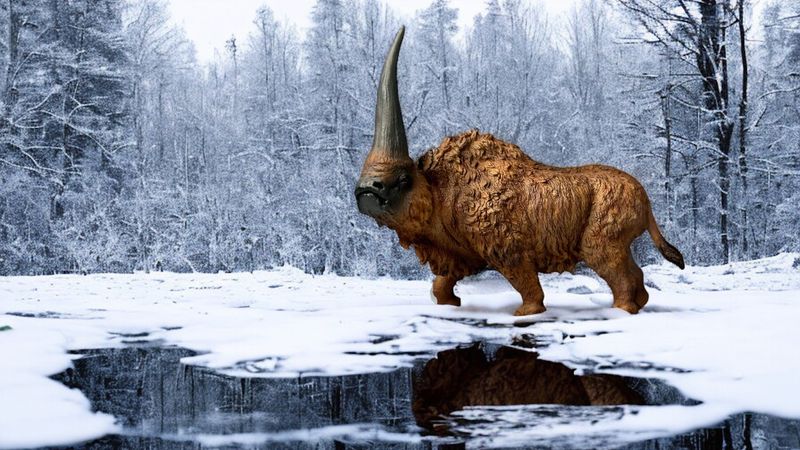
Ancient Siberian tribes passed down tales of massive one-horned beasts long before modern science discovered Elasmotherium fossils. These stories described creatures with supernatural strength and mystical horns – remarkably similar to what paleontologists would later unearth.
Medieval European travelers returning from Asia brought tales of unicorns that scholars now believe may have originated from distorted descriptions of Elasmotherium passed down through generations. The timeline fits perfectly – these stories emerged from regions where the giant rhinos had lived just thousands of years earlier.
Even the Greek historian Herodotus wrote of one-horned beasts in distant lands that matched no known animal of his time. This fascinating intersection of myth and reality shows how prehistoric creatures shaped human culture long after their extinction.
What Elasmotherium Teaches Us About Ancient Ecosystems
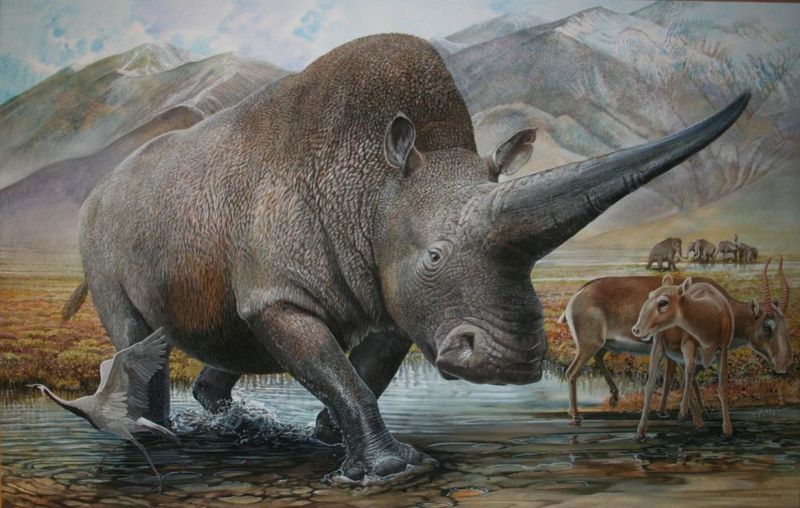
As a keystone species, Elasmotherium shaped entire ecosystems through its grazing habits. Their massive appetites and constant movement prevented any single plant species from dominating the landscape, creating diverse grasslands that supported countless other animals.
Their dung fertilized vast areas, distributing plant seeds across the steppes. Modern African rhinos play similar roles today, demonstrating how large herbivores function as living ecosystem engineers.
Studying Elasmotherium helps scientists understand how megafauna loss impacts environments. When these giants disappeared, the grasslands they maintained changed dramatically – a sobering parallel to today’s rhino conservation challenges. By understanding these ancient relationships, we gain crucial insights into modern conservation efforts and the cascading effects of losing large mammals from ecosystems.
Could Elasmotherium Have Survived Longer Than We Think
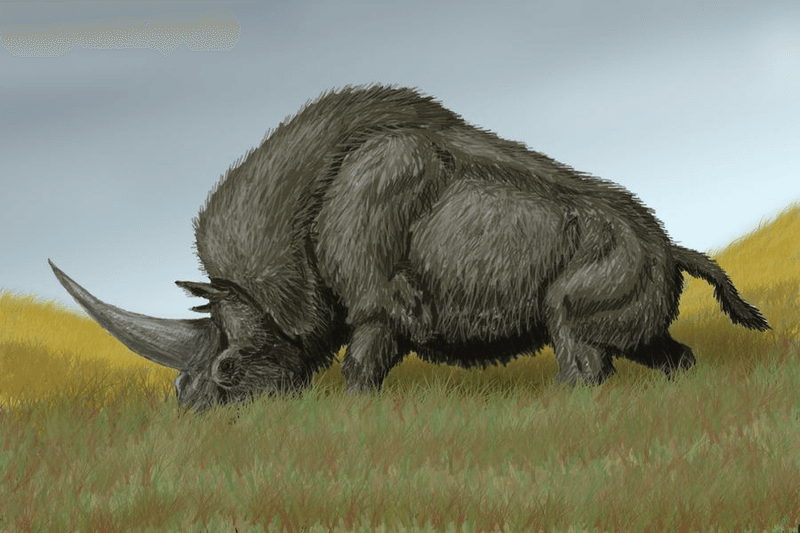
Tantalizing evidence suggests some Elasmotherium populations might have survived in isolated pockets well into human history. Medieval Russian chronicles mention encounters with giant one-horned beasts that match no known living animal of the time.
Remote regions of Siberia and Kazakhstan contain unexplored valleys where relict populations could theoretically have persisted. The discovery that they survived until 29,000 years ago – much later than previously thought – raises the question: how much more recent might their final extinction have been?
While finding living specimens is virtually impossible, undiscovered fossils might yet push their extinction date even closer to modern times. This scientific mystery reminds us that Earth’s history contains many gaps waiting to be filled by future discoveries.

